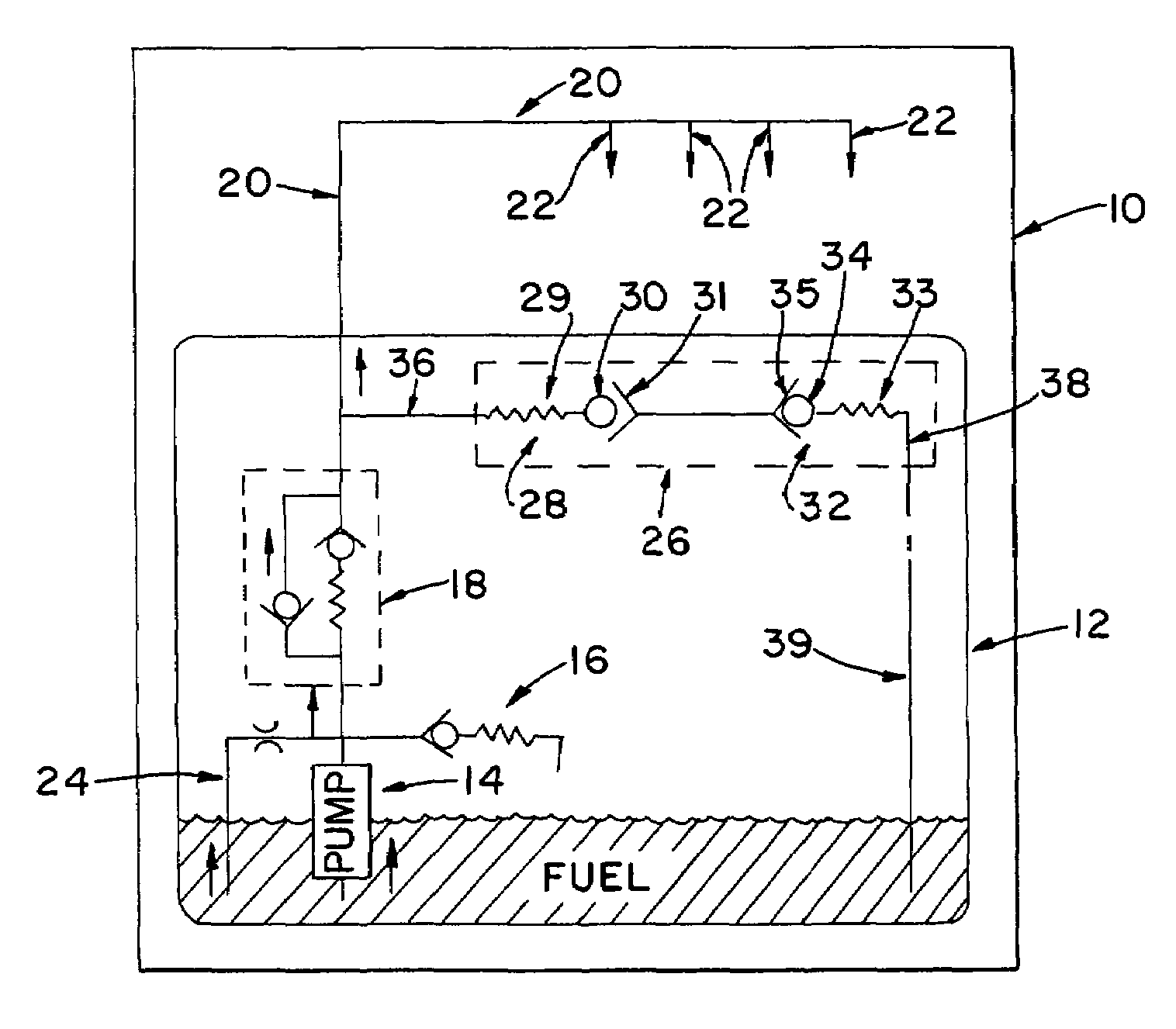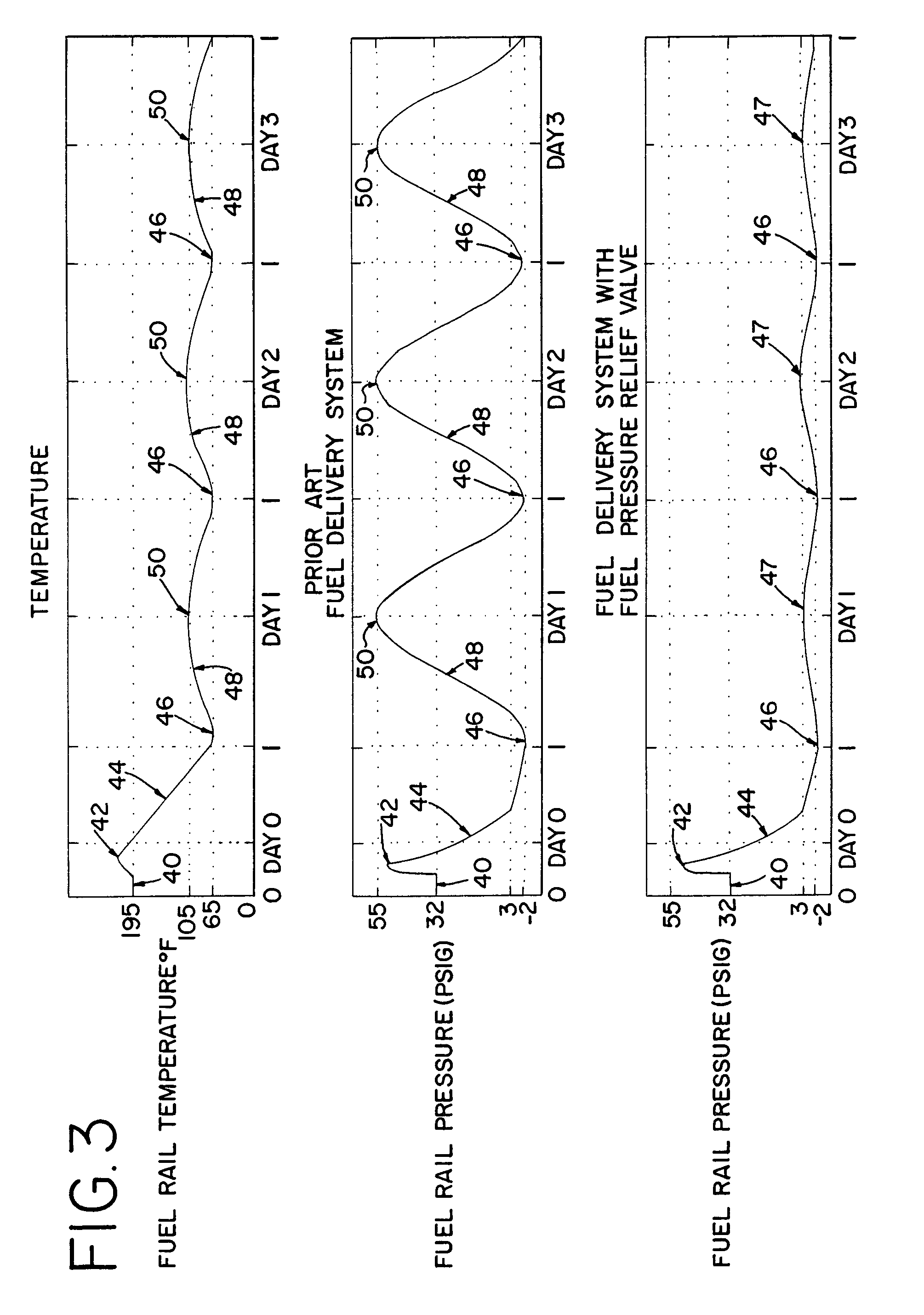Fuel pressure relief valve
a technology of fuel pressure relief valve and fuel delivery system, which is applied in the direction of liquid fuel feeder, fuel injecting pump, machine/engine, etc., can solve the problems of fuel leakage, fuel leakage from the fuel delivery system has a negative impact on the efforts of automotive manufacturers, and fuel leakage typically occurs, so as to minimize evaporative emissions and minimize fuel pressure buildup.
- Summary
- Abstract
- Description
- Claims
- Application Information
AI Technical Summary
Benefits of technology
Problems solved by technology
Method used
Image
Examples
Embodiment Construction
[0027]Turning now to the drawings, and particularly to FIGS. 1 and 2, a typical fuel delivery system 10 is shown. The fuel delivery system 10 is representative of typical fuel delivery systems used on automotive vehicles and includes a fuel tank 12, a fuel pump 14, a pump pressure relief valve 16, a parallel pressure relief valve 18, a fuel rail 20, and a series of fuel injectors 22. A typical parallel pressure relief valve consists of a 2.5 psi check valve and a 55 psi pressure relief valve. As those skilled in the art will readily appreciate, during operation the fuel pump 14 supplies fuel to the fuel manifold, or fuel rail 20, through the parallel pressure relief valve 18. The fuel is then injected into the intake manifold (not shown) of the engine through the fuel injectors 22. When the automotive vehicle is turned off, the fuel is maintained in a pressurized state in the fuel rail 20 by the parallel pressure relief valve 18. As described above, the pressurized fuel in the fuel ...
PUM
 Login to View More
Login to View More Abstract
Description
Claims
Application Information
 Login to View More
Login to View More - R&D
- Intellectual Property
- Life Sciences
- Materials
- Tech Scout
- Unparalleled Data Quality
- Higher Quality Content
- 60% Fewer Hallucinations
Browse by: Latest US Patents, China's latest patents, Technical Efficacy Thesaurus, Application Domain, Technology Topic, Popular Technical Reports.
© 2025 PatSnap. All rights reserved.Legal|Privacy policy|Modern Slavery Act Transparency Statement|Sitemap|About US| Contact US: help@patsnap.com



